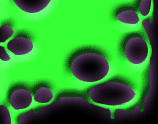Question: Where did you guys first meet?
Tool: Los Angeles at the White Swallow Pub.
Tool was formed in 1990, when Danny and Paul met Adam and Maynard. Danny explains, "I met Adam through Tom Morello of Rage (Against The Machine). And I was living beside Maynard. I never auditioned for them (Keenan and Jones). I felt kinda sorry for them, because they would invite people over to play, and they wouldn't show up, so I'd fill in." Danny had previously played drums for bands including Green Jelly. Paul had gone to California to work in the film business, which at the time was Adam's profession. (Adam had already done special effects for Terminator 2, Jurassic Park and Predator 2). Early on, Tool toured with Rollins Band, Rage Against The Machine and Fishbone. (Adam had gone to high school with Morello). Eventually, they moved from second stage to main stage at Lollapalooza '93, where they pretty much blew everyone away.
According to Bass Player Magazine (3/97), when Tool first called up Justin, he at first turned them down: "Peach had broken up about six months before, and I was forming a new band with the guitarist. It was pretty tough; I felt really loyal to this friend of mine, whom I'd played with since I was 14. But then I decided I couldn't deny myself this opportunity." Justin had actually played bass on "Sober" at the widely-bootlegged show at Shepherd's Bush, before joining the band. Tool had met him while Peach was opening for them that year.
Question: Why did Paul Leave?
Tool: He came down with Intittlitis.
The name Tool according to Danny stands for how they want their music to be a tool to aid in understanding lachrymology. It has been widely decided that "lachrymology," the science of crying as a therapy, is just another one of the elaborate wild tales Tool made up in order to keep us (or them) entertained.
"One of the unifying forces in the band is the philosophy/religion known as Lachrymology, founded in the 1940s by Ronald P. Vincent. Lachrymology translates literally to "the study of crying." The basic tenet, evident in the band's music, is that the greatest road to advancement is through pain--emotional and physical. Hence the band's name." (Carleton Univ. Newspaper; 2/16/94).
Vincent (supposedly) wrote a book in 1949 called "The Joyful Guide to Lachrymology" which (supposedly) was the band's original inspiration. Vincent suggested that people can only advance themselves by exploring and understanding their physical and emotional pain. No sign has ever been found that the book exists.

